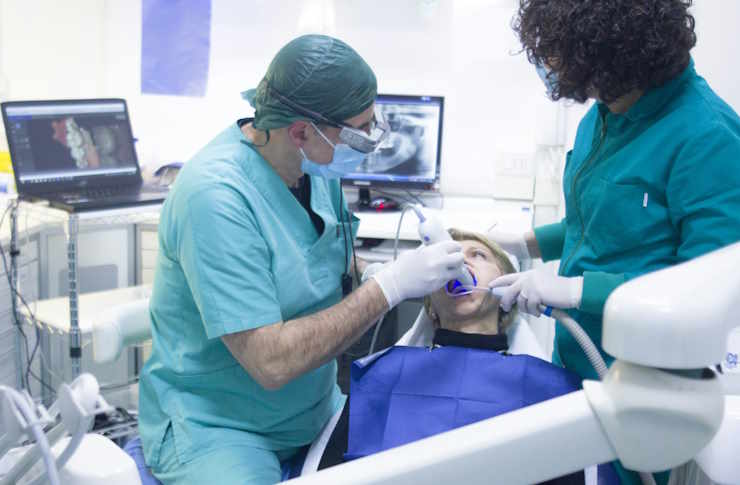Medical Assistant Training Programs Available in the US
Medical assistant training programs across the United States offer practical, hands-on experience for those interested in joining the healthcare field. Learn where to find training near you, what to expect from the courses, and how this path can lead to a stable medical career.

What does a medical assistant do on a daily basis?
Medical assistants serve as vital support staff in healthcare facilities, handling both administrative and clinical responsibilities. On a typical day, they might schedule patient appointments, update medical records, and process insurance claims during administrative hours. Their clinical duties include taking vital signs, preparing patients for examinations, assisting physicians during procedures, and collecting laboratory specimens. Many medical assistants also perform basic laboratory tests, administer medications under physician supervision, and provide patient education about treatments and medications. The role requires excellent communication skills as medical assistants often serve as the primary point of contact between patients and healthcare providers.
What topics and skills are covered in training programs?
Medical assistant training programs cover a comprehensive curriculum that prepares students for diverse workplace responsibilities. Administrative coursework includes medical office procedures, appointment scheduling, medical billing and coding, insurance processing, and electronic health records management. Clinical training encompasses anatomy and physiology, medical terminology, pharmacology basics, infection control procedures, and laboratory techniques. Students learn to operate medical equipment, perform diagnostic tests like EKGs, and assist with minor surgical procedures. Many programs also emphasize soft skills such as professional communication, patient relations, and medical ethics. Hands-on training in simulated clinical environments helps students practice procedures before working with actual patients.
How long does it take to complete medical assistant training?
The duration of medical assistant training varies depending on the program type and format chosen. Certificate programs, which are the most common option, typically take 9 to 12 months to complete when attended full-time. Part-time certificate programs may extend to 18 to 24 months, accommodating students who work while studying. Associate degree programs in medical assisting generally require two years of full-time study but provide more comprehensive education and may lead to better job opportunities. Some accelerated programs can be completed in as little as 6 to 8 months, though these require intensive study schedules. Online programs with hands-on externship components offer flexible timing, allowing students to complete theoretical coursework at their own pace while fulfilling practical requirements at local healthcare facilities.
Where can you find accredited medical assistant training near you?
Accredited medical assistant training programs are available through various educational institutions across the United States. Community colleges frequently offer both certificate and associate degree programs at affordable rates, with many providing evening and weekend classes for working students. Vocational and technical schools specialize in career-focused training and often have strong connections with local healthcare employers. Private career colleges offer accelerated programs with flexible scheduling options, though they may cost more than public institutions. When searching for programs in your area, verify accreditation through recognized bodies such as the Commission on Accreditation of Allied Health Education Programs (CAAHEP) or the Accrediting Bureau of Health Education Schools (ABHES). Many programs also offer hybrid learning options that combine online coursework with hands-on training at local clinical sites.
What career opportunities are available after completing training?
Graduates of medical assistant training programs can pursue various career paths in healthcare settings. Most medical assistants work in physician offices, outpatient clinics, and specialty practices such as cardiology, dermatology, or orthopedics. Hospitals employ medical assistants in outpatient departments, emergency rooms, and specialty units. Other opportunities exist in urgent care centers, diagnostic laboratories, insurance companies, and government health agencies. With experience, medical assistants can advance to supervisory roles, become medical office managers, or specialize in areas like medical coding or medical insurance processing. Some graduates use their medical assistant training as a stepping stone to pursue further education in nursing, healthcare administration, or other allied health professions. The Bureau of Labor Statistics projects much faster than average job growth for medical assistants, with employment expected to grow 18 percent from 2022 to 2032.
| Training Provider | Program Type | Duration | Cost Estimation |
|---|---|---|---|
| Community Colleges | Certificate/Associate | 9-24 months | $3,000-$8,000 |
| Penn Foster Career School | Online Certificate | 7-12 months | $4,000-$6,000 |
| Herzing University | Certificate/Diploma | 8-18 months | $15,000-$25,000 |
| Pima Medical Institute | Certificate | 9 months | $12,000-$18,000 |
| Kaplan Career Institute | Diploma | 15 months | $20,000-$30,000 |
Prices, rates, or cost estimates mentioned in this article are based on the latest available information but may change over time. Independent research is advised before making financial decisions.
Medical assistant training represents an excellent entry point into the healthcare field, offering stable employment prospects and opportunities for career advancement. The combination of administrative and clinical skills learned in these programs makes graduates valuable assets to healthcare teams across various settings. With proper accredited training, aspiring medical assistants can build rewarding careers while contributing meaningfully to patient care and healthcare delivery.
This article is for informational purposes only and should not be considered medical advice. Please consult a qualified healthcare professional for personalized guidance and treatment.




